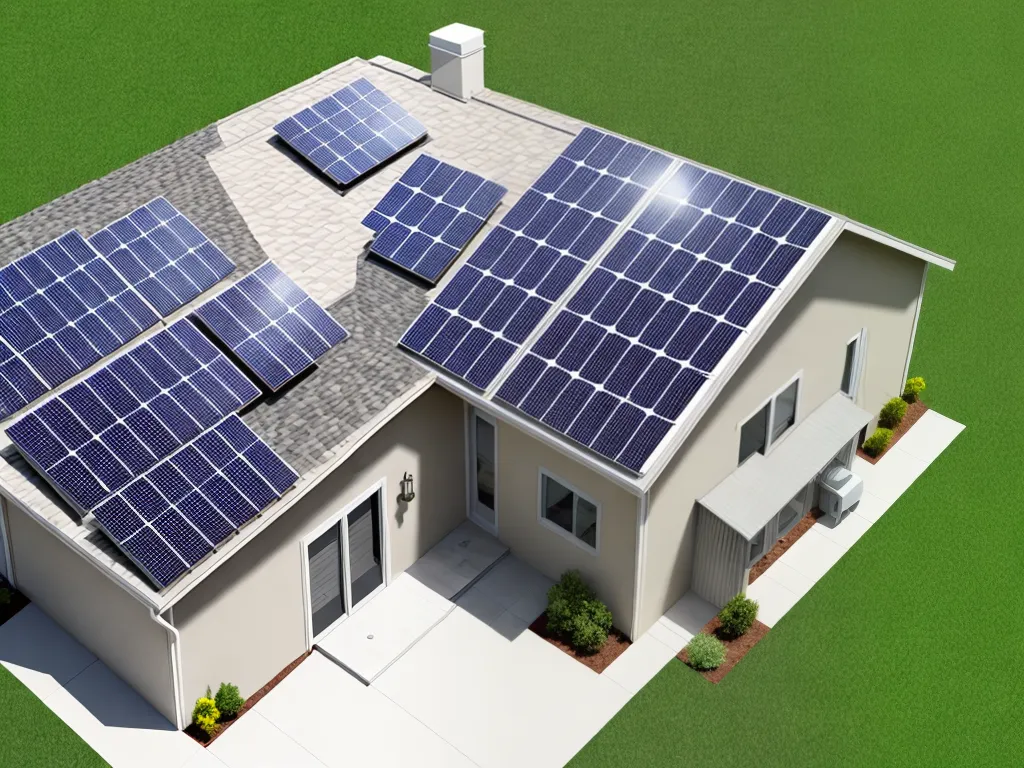
Installing solar panels on your home can reduce your electricity bills and your carbon footprint. However, the upfront costs of solar power can be daunting. With some planning and DIY skills, you can wire your home for solar power without breaking the bank.
Assessing Your Electrical Needs
The first step is to analyze your home's electrical usage to properly size your solar system. Here are some key factors to consider:
-
Current electricity bill - Review 12 months of electric bills to see your average monthly usage in kilowatt-hours (kWh). This provides a baseline for energy needs.
-
Future needs - Account for upcoming changes that may increase energy use like adding electric vehicles, HVAC upgrades, or new appliances. Adding 20-30% to your current usage helpsfuture proof the system.
-
Energy efficiency - Reduce waste by replacing old bulbs with LEDs, upgrading insulation, and utilizing smart home technology. Efficiency lowers the solar system size needed.
-
Net metering policies - Check your utility's net metering rules to see if you can sell excess power back to the grid. This reduces payback time.
By understanding electrical usage, you can right-size the solar array and avoid overspending on excess capacity.
Selecting Solar Panels
Solar panels come in a range of types, sizes, and efficiencies. Here are budget-friendly options to consider:
-
Polycrystalline silicon - These mainstream panels are moderately efficient at 15-18% and inexpensive at $0.70-0.90 per watt. This is the best value.
-
Monocrystalline silicon - Slightly more efficient at 18-22% but costs $1.00-1.25 per watt. Worth it if roof space is limited.
-
Thin film - Lower 12-16% efficiency but cheaper at $0.50-0.75 per watt. Can be a good option if cost is critical.
-
Used panels - Check craigslist and eBay for reclaimed panels. Just test panels thoroughly before purchasing.
For a grid-tied system, select Tier 1 panels with strong warranties from reputable brands like SolarWorld, Canadian Solar or Jinko.
Inverter Selection
The inverter converts the DC power from the solar panels into usable AC power for your home. Here are some economical inverter options:
-
Microinverters - Small units installed on each panel for $0.20-0.30 per watt. More expensive upfront but last longer than string inverters.
-
String inverters - Single inverter connected to a string of panels. Costs $0.10-0.15 per watt but doesn't last as long.
-
Grid-tie inverters - Designed to sync solar power output with the electric grid. This is essential for net metering.
For grid-tied systems, stick with trusted brands like Enphase, SolarEdge or SMA America to ensure safety, reliability, and warranties.
Electrical Permits and Codes
Installing solar power involves electrical work so permits and inspections are required in most areas. Here are some key steps:
-
Research local permitting costs - Often $100-500 depending on the jurisdiction.
-
Understand the National Electrical Code (NEC) requirements for solar - Especially articles 690 and 705.
-
Consider hiring a solar installer just to pull the permits and pass inspections. Costs $200-500 but ideal if DIY skills are limited.
-
Passing inspections on the first try avoids costly re-inspection fees.
Pulling electrical permits and designing to NEC standards ensures your system is legal, safe, and eligible for incentives.
Racking and Mounting Considerations
Solar panels can be installed on your roof or ground mounted on racks. Here are some budget racking options:
-
Roof mounts - Sturdy aluminum and galvanized steel roof mounts cost $100-300 per panel. Use standing seam clamps or lag bolts on sloped rooftops.
-
Ground mounts - DIY racking with treated lumber and galvanized poles can save 50% over commercial solutions. Expect $1000+ for materials.
-
Tracking racks - Moving racks boost output up to 25% but cost 3X more. Avoid these unless electricity usage is very high.
Proper racking improves solar yield and protects your investment from wind and weather. Focus on durable, low-maintenance solutions able to withstand decades outdoors.
Home Electrical Upgrades
Solar power systems generate a lot of current that must be safely delivered to your electrical panel. Some key upgrades include:
-
Load calculation - Determine if your main panel can handle the added amperage from solar. If not, a 200 amp upgrade costs around $2000.
-
New breaker - Install a dedicated double-pole breaker in your main panel for the solar input feed. Usually $50-150.
-
Conduit and wiring - Run THHN copper wiring in galvanized rigid or EMT conduit from the panels to your panel. Estimate $3-5 per foot.
-
Grounding - Proper system grounding to NEC standards protects from lightning strikes or electrical faults. Rods and wire cost ~$100.
A licensed electrician is recommended for panel upgrades and integrating solar power. Get multiple quotes to find the best rate.
Energy Storage Options
To keep energy flowing overnight, batteries can store excess daytime solar power. Economical options include:
-
Grid-tied only - No batteries, so you still rely on the electric grid at night. This is the most affordable option.
-
Lead-acid batteries - Inexpensive at $100-200 per kWh but heavier and limited lifespan.
-
Lithium-ion batteries - Lightweight with excellent cycle life but still expensive at $500-1000 per kWh.
-
Battery banks - Connect multiple smaller batteries together. Saves money over large single batteries.
For most homes, grid-tied solar without storage offers the fastest payback compared to adding expensive batteries.
Final Considerations
Installing solar power systems requires research, tools, and DIY electrical skills. Be sure to:
-
Educate yourself thoroughly on proper component selection, NEC standards, and local building codes.
-
Have a licensed electrician review plans and provide oversight.
-
Use extreme caution when working on electrical systems and ladders/rooftops.
Going solar is a big project but pays dividends for decades in energy savings and sustainability. With prudent planning and budget shopping, it can work financially too.